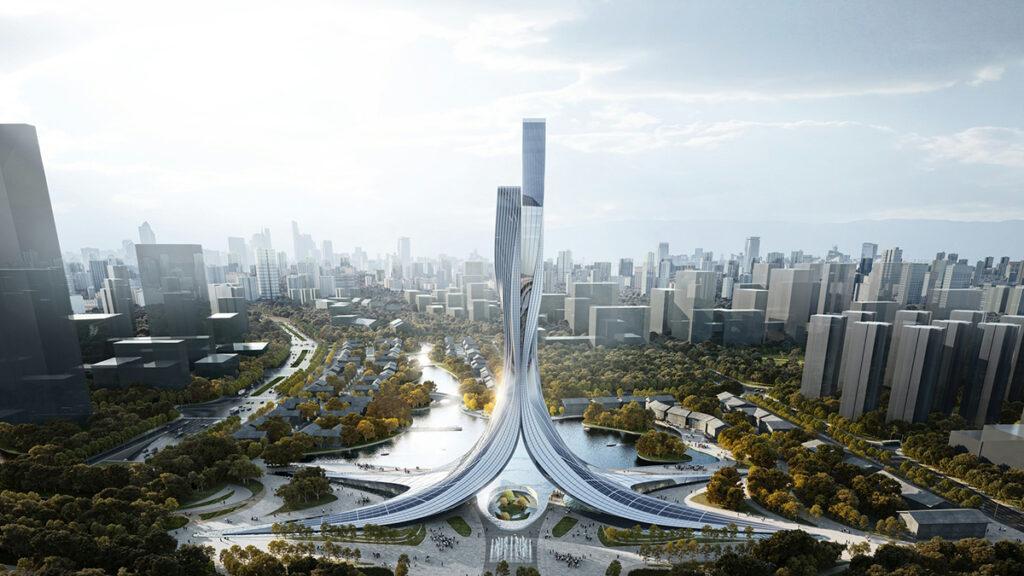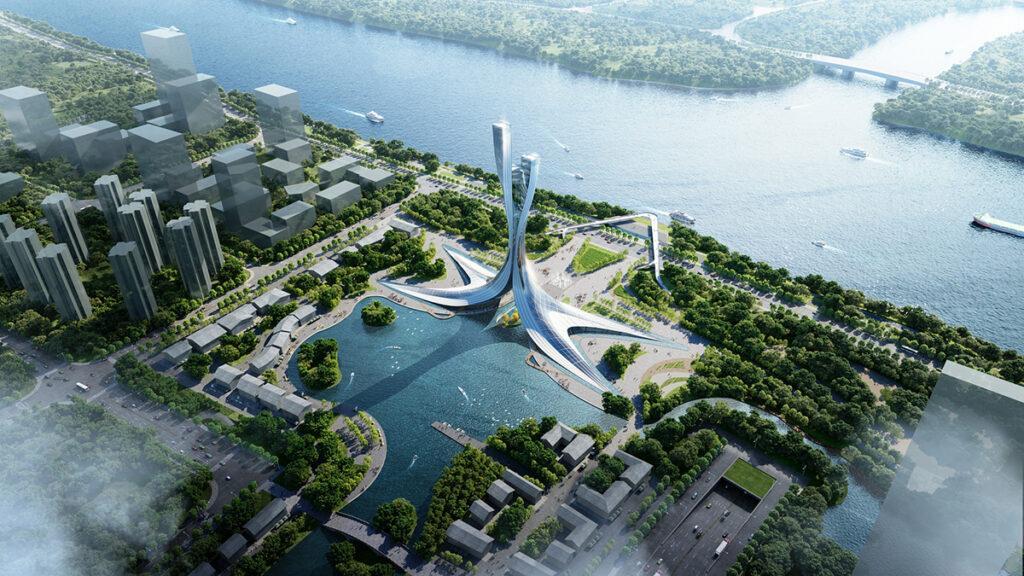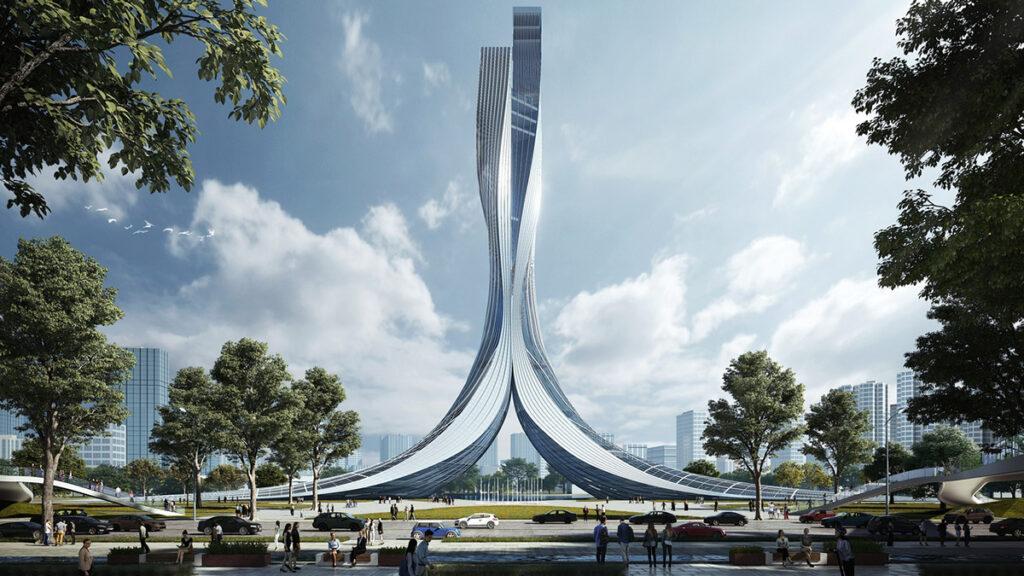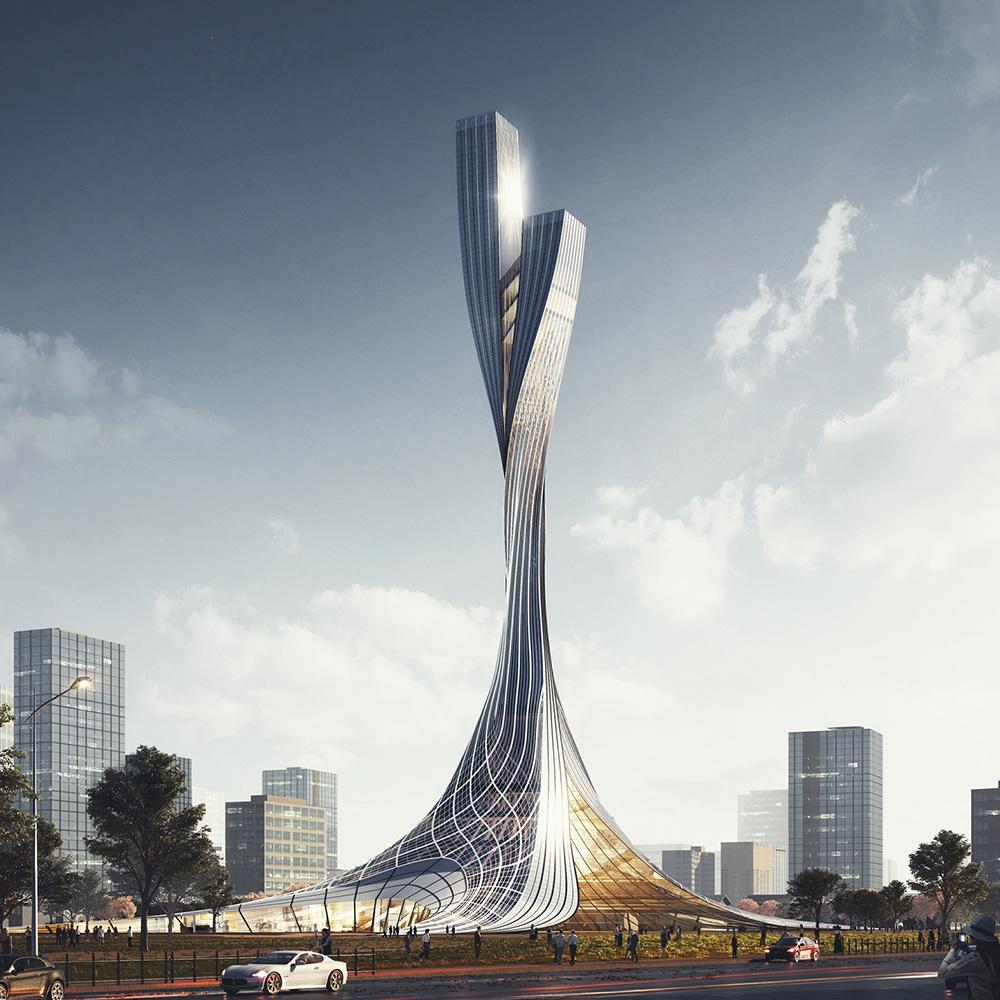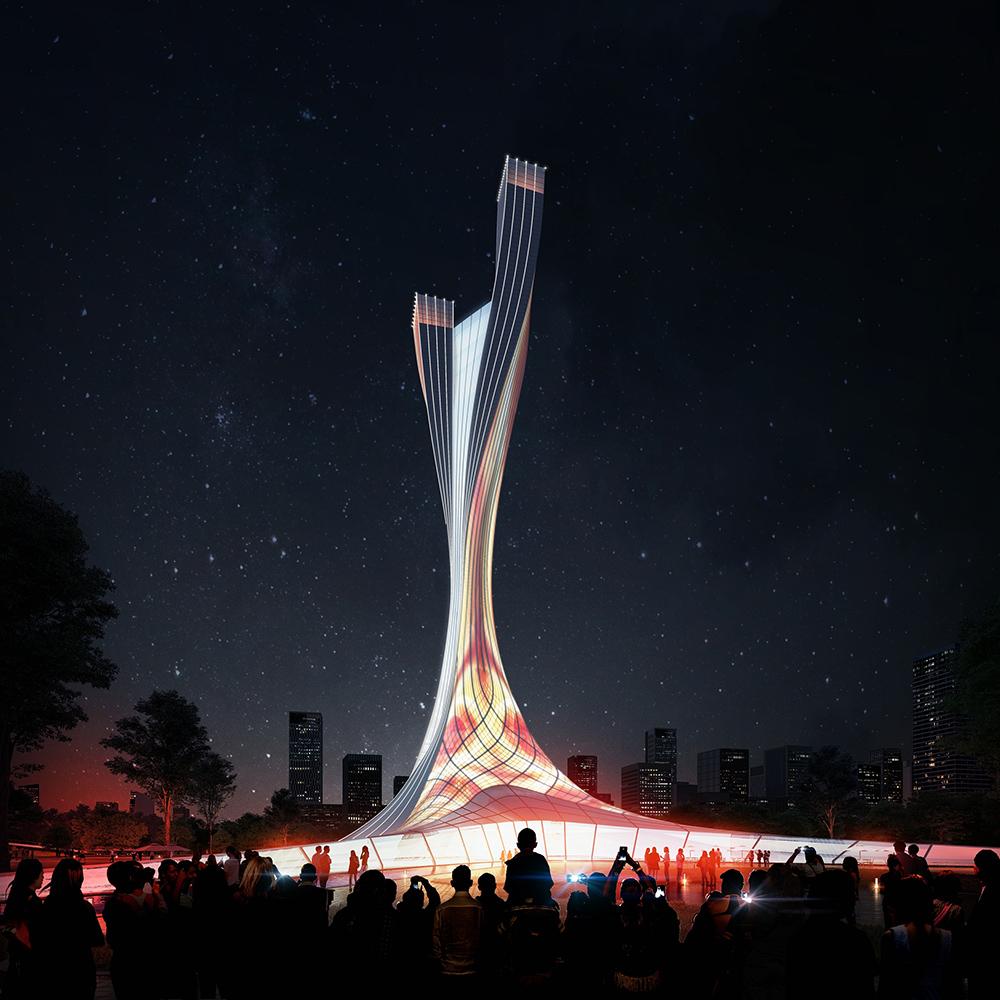Fire on the water: China’s watergate
The Chinese city of Hengyang is planning to build a truly impressive architectural monument: two intertwined towers, soaring to a height of 177 metres. Their story tells of fire, water and birds…
The history of China’s metropolis Hengyang in the province of Hunan extends far back into past ages and is filled with battles, heroic deeds and victories. Above all, it is said that fire was first kindled in the city. And findings by archaeologists and the various relics discovered do indeed suggest that people were handling fire here very early on.
Built on fire
Admittedly, in religious traditions the stories tend to be dramatized. Somewhat pompously, the legend states: “The city of Hengyang was the first to bear the mark of Zhu Rong, the God of Fire and the South.”
Nevertheless, it is not the responsibility of architecture to document or refute historical details. It is certainly capable of telling a story, though. And the tale that has its origins in this area of the world is being recounted in impressive style on the river banks of this city in southern China, with a truly spectacular building project that was recently revealed to the public.
Specifically, the project involves the construction of an extraordinary gateway to the city, called the Xiangjiang Gate. In a design competition organized especially for this purpose, the proposal submitted by architecture bureau RMJM Shanghai was chosen as the winner. The philosophical base of the tower design will have tipped the scales in its favour.
Three stories moulded into one
The design of the base is oriented on three different pillars of the region’s historic DNA.
As mentioned above, fire plays a central role here – although in the monument itself it will merely be represented metaphorically: viewed from the front, the towers look like two ossified tongues of fire. Or this is at least how they are described by the competition winners.
Which takes us to the fundamental scenario presented by the architects: depending on how you view the towers, the project changes its shape and tells a different story. If you turn the building on its head, it becomes – with enough imagination – a goose flying off into the sky.
The story behind this image has its origins many thousands of years ago. In ancient Chinese poetry Hengyang was a winter refuge for wild geese escaping the cold of the north, which earned it the nickname of “Wild Goose City”.
Saying boo to a goose
In China wild geese traditionally indicate a change in the seasons, but they also bear a message of love from afar. And this time the message is ablaze with fire.
The metaphors don’t stop there, though. If a goose were to fly over the structure, it would have an entirely different perspective: a bird’s eye view. From above, the building’s central towers look neither like geese nor like tongues of fire, but rather like a narrow stream of water flowing through two pieces of land. Seen from this angle, the construction is a gate of water on the water – and so it is being nicknamed by some as the “watergate”…
At any rate, the image of water pays homage to the geographical location of the city, which is divided into two by the river Xiangjiang. But the architects emphasize that it also pays homage to the city’s convergent spirit: Hengyang is a city where old and new, culture and modernity converge in many aspects. And now fire and water have been added to this as well, or so they claim.
If we forget about the philosophical base for a moment, however, even though it is certainly fascinating, what are we left with? Essentially, these are two gigantic columns that soar 177 metres into the sky and will allegedly serve as a monument to the region around the world. After all, Hengyang sees itself as not just a city with a rich cultural heritage. It is – more than anything else – the region’s second largest city. Drawing on this status, it likes to present itself as a rapidly developing technology hub.
Technical ingenuities
The complex structural design of the “Xiangjiang Gate” builds on this image – it reflects the highest possible level of contemporary structural engineering technology, according to the designers. The winning proposal also integrates the local environment and forms an interaction between technology, climate, building materials and human behaviour.
For example, the RMJM designers specify that they imagined the monument’s facade as a window on the Xiangjiang culture, radiating the lights, colours and shadows of the seasons. Integrating special LED technology will enable the glass curtain wall to be lit up at night as well.
The relationship between architecture and the environment has always been a complex one. To reach harmony between the two, we use climate statistics and engineering parameters to study the most appropriate design forms.
Qiu Jiehe, CEO of RMJM Shanghai
CEO of RMJM Shanghai Qiu Jiehe remarks: “The relationship between architecture and the environment has always been a complex one. To reach harmony between the two, we use climate statistics and engineering parameters to study the most appropriate design forms so that we can shape the best and most suitable architectural forms under special environmental conditions.”
Asking the question “why”?
In summary: This building is capable of many different individual interpretations, which is presumably an effective way of persuading a competition jury to choose your design as the winner. But whatever the underlying motivation, it has produced plans for a spectacular construction whose exact purpose is not yet really clear to outsiders. Quite unlike the no less spectacular and recently completed “China Zun” tower in Beijing.
Despite this, we do already know that a tourist information office is expected to be housed at the foot of the towers.
And so in a few years’ time we will be able to ask there if we want to know more…
Text: Johannes Stühlinger
Translation: Rosemary Bridger-Lippe
Images: RMJM Studios Shanghai
